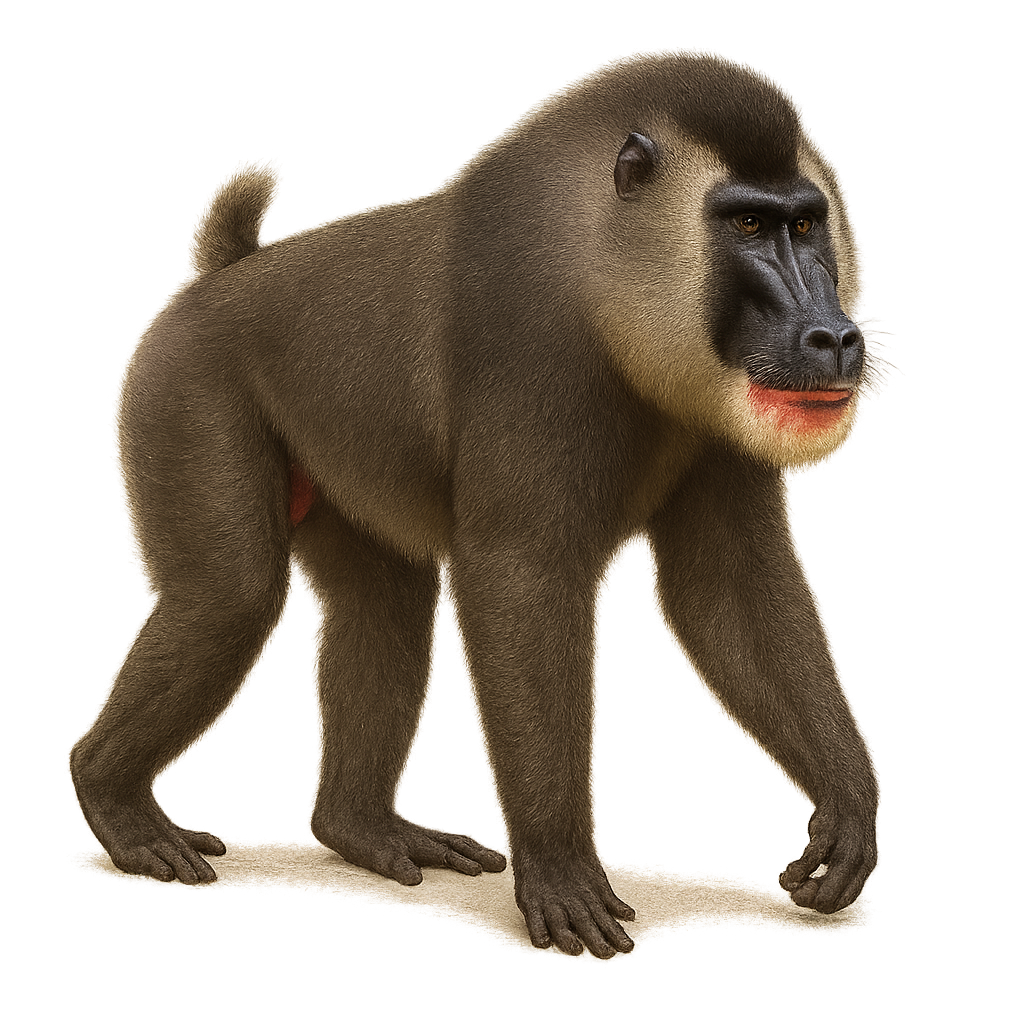Your wildlife photography guide.
Explore the drill in detail, study its behavior, prepare your shots.
Where to observe and photograph the drill in the wild
Learn where and when to spot the drill in the wild, how to identify the species based on distinctive features, and what natural environments it inhabits. The WildlifePhotographer app offers tailored photography tips that reflect the drill’s behavior, helping you capture better wildlife images. Explore the full species profile for key information including description, habitat, active periods, and approach techniques.
Drill
Scientific name: Mandrillus leucophaeus

IUCN Status: Endangered
Family: CERCOPITHECIDAE
Group: Mammals
Sensitivity to human approach: Shy
Minimum approach distance: 10 m
Rut period: June to August
Gestation: 175-180 jours
Births: November to December
Habitat:
Tropical forests, lowland forests, montane forests
Activity period :
Primarily active during the day, with peak activity in the morning and late afternoon.
Identification and description:
The Mandrillus leucophaeus, commonly known as the drill, is a primate from the Cercopithecidae family. It is characterized by its dark fur and colorful face, with shades of blue and pink around the nose. Males are significantly larger than females, weighing up to 30 kg. They primarily inhabit the tropical forests of Cameroon, Nigeria, and Equatorial Guinea. Drills are social animals, living in groups led by a dominant male. Their diet mainly consists of fruits, leaves, and insects. Unfortunately, this species is threatened by deforestation and hunting, leading to a significant decline in its population.
Recommended lens:
400mm – adjust based on distance, desired framing (portrait or habitat), and approach conditions.
Photography tips:
When photographing the drill, it's essential to maintain a safe distance of at least 10 m to avoid disturbing the animal. Use a telephoto lens of 400 mm or more to capture detailed images without getting too close. Be patient and wait for the drill to feel comfortable in its natural environment. The best photos are often taken when the animal is relaxed and engaged in its daily activities.
From knowledge to field practice
A species profile helps you understand an animal. In the field, the challenge is often different. Remembering your own observations.
The WildlifePhotographer app allows you to:
• record your personal observations
• note locations, dates, and behaviors
• revisit your field references over time
• build a private and long-term field logbook
The app does not provide observation locations.
It helps you organize what you actually observe, with respect for wildlife.

